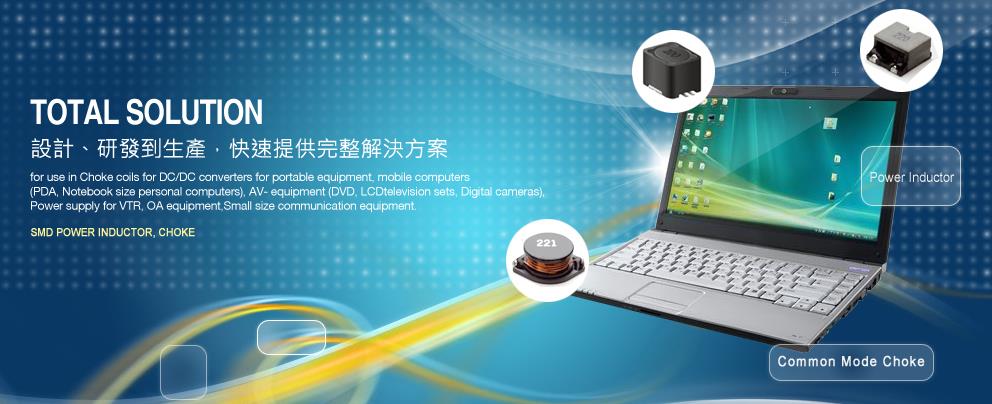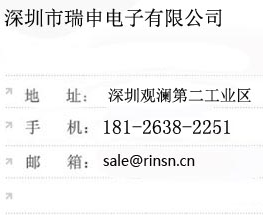LED driver solution for MR16 and similar retrofit lamps
来源: 作者: 发布时间:2015-01-24 09:46:56 浏览量:
This application note presents an LED driver solution for MR16 and similar retrofit lamps. The circuit drives LEDs from a 12VAC input. The solution works with both magnetic and electronic transformers and is dimmable. It requires no electrolytic capacitors, which extends LED lamp life. Test setup and results are shown.

Figure 1. The schematic for the reference design.
Electronic transformers are designed to have halogen lamps as loads, and not LED lamps. For the transformer to work properly, it needs a minimal amount of load current through the cycle of the line voltage. If the load current falls below this minimum, or if high load-current transients bring it below this minimum, the transformer turns off during the cyc功率电感le of the line voltage. If this happens, the lamp light can flicker. With halogen lamps, there is no problem having enough load current, because they are purely resistive loads and the power exceeds 20W. Moreover, the electronic transformers are designed to operate with resistive loads, as are halogen lamps.
When electronic transformers are used with halogen or incandescent lamps, two issues must be solved.
Trailing-edge dimmers reduce the amount of lamp light by cutting the final part of the line voltage at each half cycle.
Sometimes the infrastructure still includes a magnetic trans大电流电感former instead of an electronic one. A magnetic transformer has the same requirements for resistive behavior of the load and minimum load current as does an electronic transformer. However, if a dimmer is present (leading-edge dimmers are typically used with magnetic transformers), the dimmer requires a resistive load and a minimum load current. In short, the LED driver has similar constraints to those mentioned above for electronic transformers.
The solution presented here uses an active, power factor correction (PFC) approach to control and shape the input current so it is compatible with electronic transformers and dimmers. Active PFC provides the best control of the input current; it keeps the current above the minimum required by the dimmer and transformer for the largest part of the input voltage cycle and, thus, avoids transient spikes of that current. Active PFC is, therefore, the best approach to design 贴片电感a dimmable lamp with no flicker.
Introduction
This application note describes a proprietary solution that will drive LEDs off a 12VAC input for MR16 and similar retrofit lamps. This design can be used with both magnetic and electronic transformers. It is dimmable with leading-edge dimmers for magnetic transformers and with trailing-edge dimmers for electronic transformers. No electrolytic capacitors are required. This greatly extends the lifetime of an LED lamp, because electrolytic capacitors are typically the element of the system with the shortest lifetime.Solution specifications
- Input voltage: 12VAC
- Output LED power: 5W
- Number of output series LEDs: 3 to 4
Board terminals (Figure 1)
- Inputs: VIN1, VIN2, input AC supply
- Outputs: LED+, LED-, output LED anode and cathode connections

Figure 1. The schematic for the reference design.
Compatibility issues for electronic transformers and dimmers
Electronic transformers are a lower cost, smaller, and lighter alternative to traditional magnetic transformers for converting the 120VAC/230VAC line voltage to 12VAC and to supply an MR16 lamp. Electronic transformers modulate the input AC voltage with a frequency of 35kHz to 40kHz, and then feed this signal to a high-frequency transformer that converts 120/230VAC to 12VAC. Thanks to this high-frequency modulation, the transformer can be less expensive, smaller, and lighter. The 35kHz to 40kHz modulation is done with a self-oscillating circuit that uses a proportional base drive for the bipolar transistors that function as the switches for a half bridge.Electronic transformers are designed to have halogen lamps as loads, and not LED lamps. For the transformer to work properly, it needs a minimal amount of load current through the cycle of the line voltage. If the load current falls below this minimum, or if high load-current transients bring it below this minimum, the transformer turns off during the cyc功率电感le of the line voltage. If this happens, the lamp light can flicker. With halogen lamps, there is no problem having enough load current, because they are purely resistive loads and the power exceeds 20W. Moreover, the electronic transformers are designed to operate with resistive loads, as are halogen lamps.
When electronic transformers are used with halogen or incandescent lamps, two issues must be solved.
- LED lamps ar电感生产厂家e, in general, not purely resistive loads. In particular, if the driver is a simple voltage rectifier followed by a DC-DC converter, its input current is made of short, high spikes of current at each half cycle of the input voltage. This is not good for transformers;
- LED lamps are more efficient than halogen lamps. While this is certainly good, it can be an issue for compatibility with electronic transformers because the load current of LED lamps is, of course, lower.
Trailing-edge dimmers reduce the amount of lamp light by cutting the final part of the line voltage at each half cycle.
Sometimes the infrastructure still includes a magnetic trans大电流电感former instead of an electronic one. A magnetic transformer has the same requirements for resistive behavior of the load and minimum load current as does an electronic transformer. However, if a dimmer is present (leading-edge dimmers are typically used with magnetic transformers), the dimmer requires a resistive load and a minimum load current. In short, the LED driver has similar constraints to those mentioned above for electronic transformers.
Description of the circuit
This circuit is a buck-boost converter, composed of inductor L1, switching MOSFET Q1, and power diode D6. It works in fixed-frequency, continuous-conduction mode.The solution presented here uses an active, power factor correction (PFC) approach to control and shape the input current so it is compatible with electronic transformers and dimmers. Active PFC provides the best control of the input current; it keeps the current above the minimum required by the dimmer and transformer for the largest part of the input voltage cycle and, thus, avoids transient spikes of that current. Active PFC is, therefore, the best approach to design 贴片电感a dimmable lamp with no flicker.
请教个DC-DC开关电源问题请问各位大侠们:1.直流转直流 开关电源 的 变压器 参数怎么确定?2.变压器线圈匝数比 怎么计算的?尤其变压器有没什么书籍专门讲开关电源变压器的介绍介绍3.开关电源输入的电压范围怎么确定,是带负载测还是空载测?(安全和极限电压范围)满意回复+20liukunming2007 查看完整内容变压器与电感器设计手册(第三版) 作 者 (美)麦克莱
UOUT=1V的DC/DC变换器发展趋势1简介为了以更低的功耗获得更高的速度和更佳的性能,半导体器件正在向1V工作电压发展,这也对DC/DC变换器提出了更高的要求。由于便携产品将率先采用1V工作电压,因而对电源效率和功率密度的挑战显得更为严
TOPswicth芯片的频率问题大家好,请教一个问题:用PI的开关电源芯片topswitch271,芯片引脚设置的频率是132K,但是测试Vds的时候发现频率大概为33K,这是为啥呢轻载下的测试的吧,开关频率占空比接近0了谢谢,已





